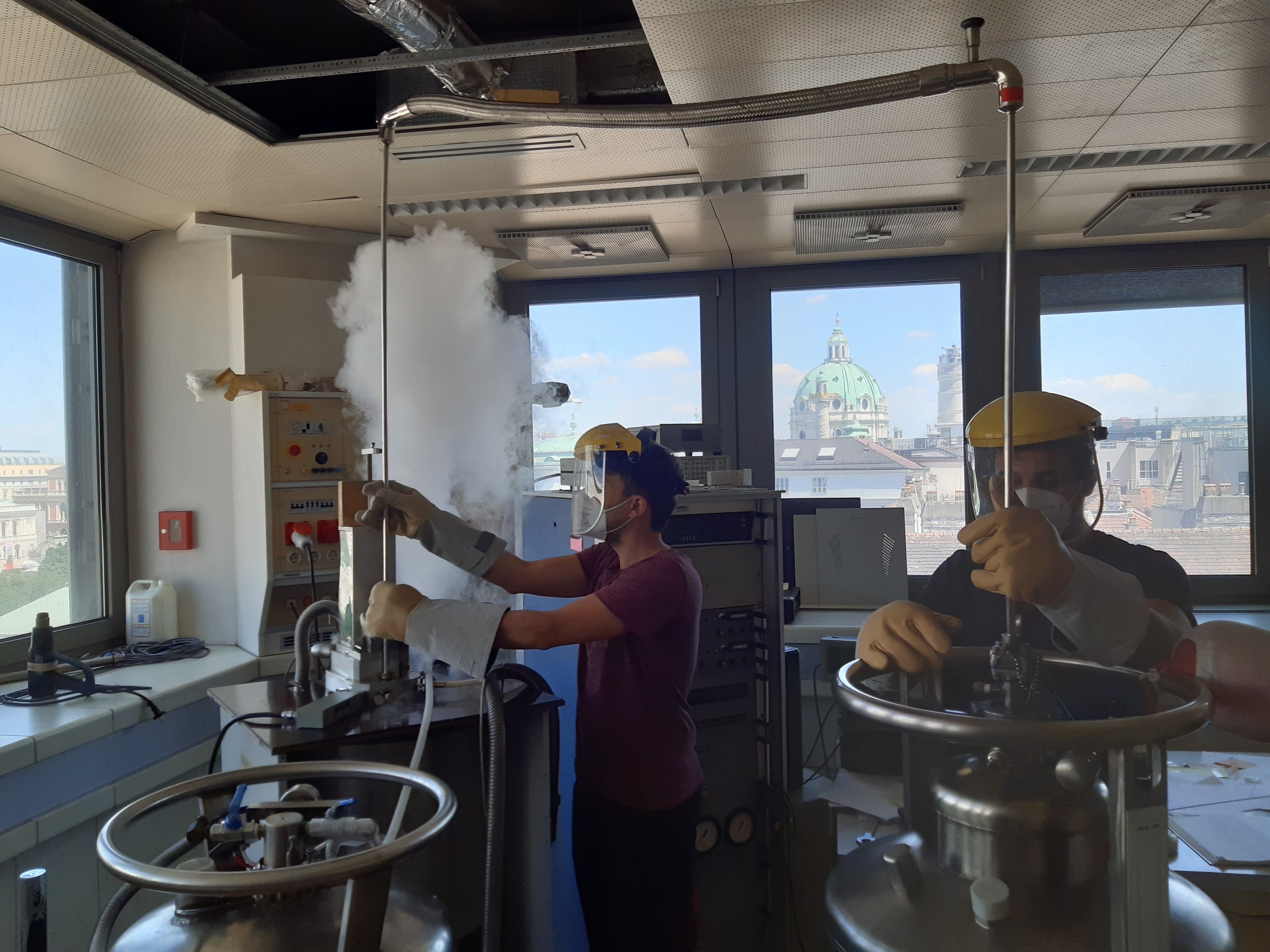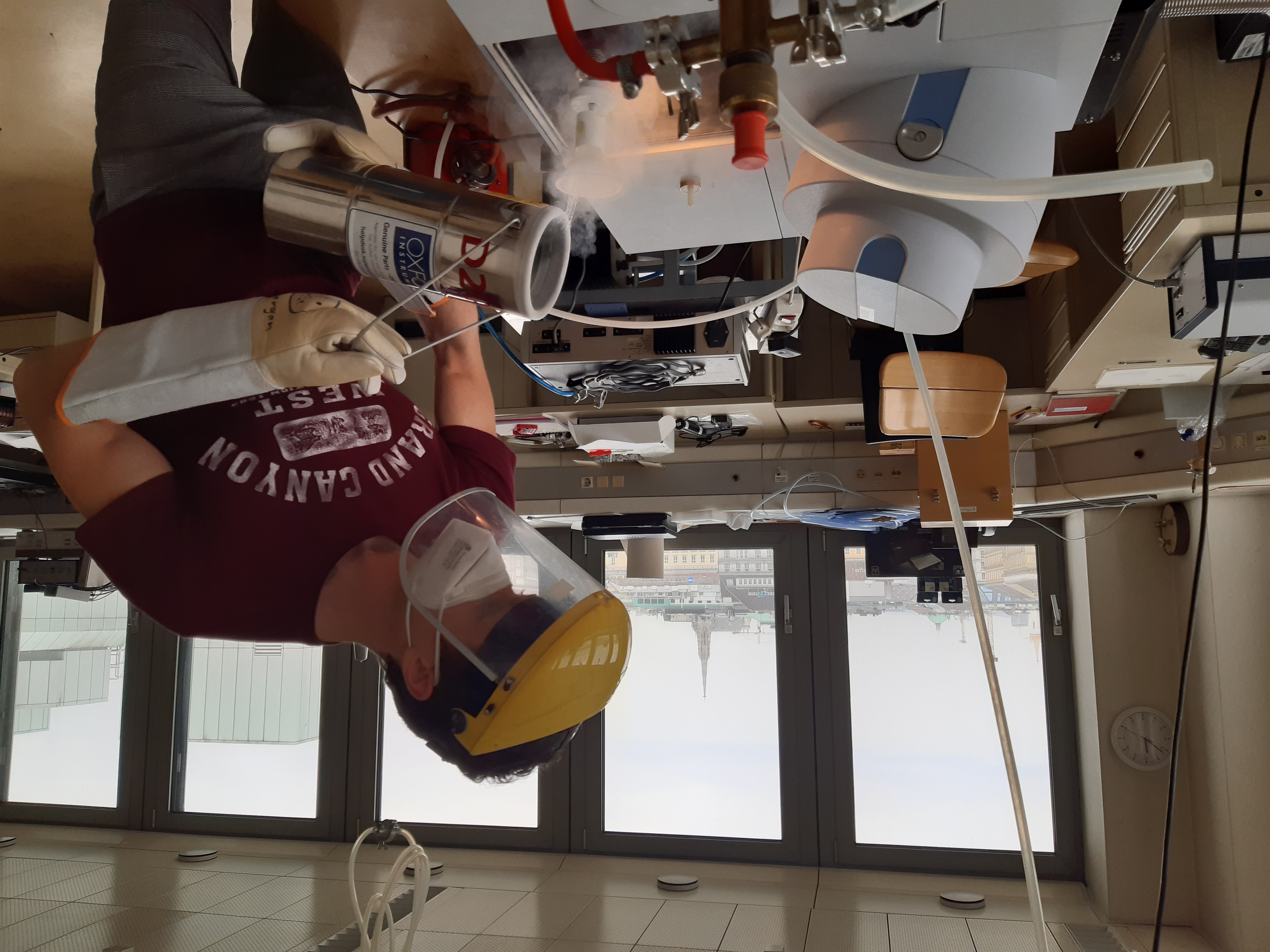NMR --- NUCLEAR MAGNETIC RESONANCE
The spins of atomic nuclei (such as 1H, 13C, 17O, 63Cu, etc.) are excited by electromagnetic pulses in the radiofrequency range (1 - 600 MHz). The relaxation times (T1, T2), resonance frequencies and line widths of the corresponding peaks in the NMR spectrum provide useful information on local magnetic fields at the position of the nucleus emerging from the conduction electrons. This way, a nuclear spin serves as a local probe that is highly sensitive to changes in the electronic and magnetic properties of the material under study.
Optical Spectroscopy
Electromagnetic radiation can trigger electronic transitions and excite phonons and vibrations inside a solid. Here, we measure the absorption and reflection properties of crystalline materials from the far-infrared up to the visible, covering a frequency range ν = 1 - 800 THz (hc/λ = 30 - 25000 cm-1, hν = 0.004 - 3 eV).
Cryogenic Investigations


Optical and NMR experiments are performed in various cryostats from room temperature (295 K) down to the liquefication point of 4He at 4.2 K. For NMR, superconducting magnets provide static magnetic fields up to 14 T (where nuclear spin transitions of 1H occur around 600 MHz, and at lower frequencies for other nuclei) that can be varied as necessary. There is also access to 3He/4He dilution refrigerators, which allows for NMR experiments down to several millikelvin.
Complementary transport, magnetization, thermal expansion and specific heat characterizations are performed on a regular basis using the facilities of the IFP.

